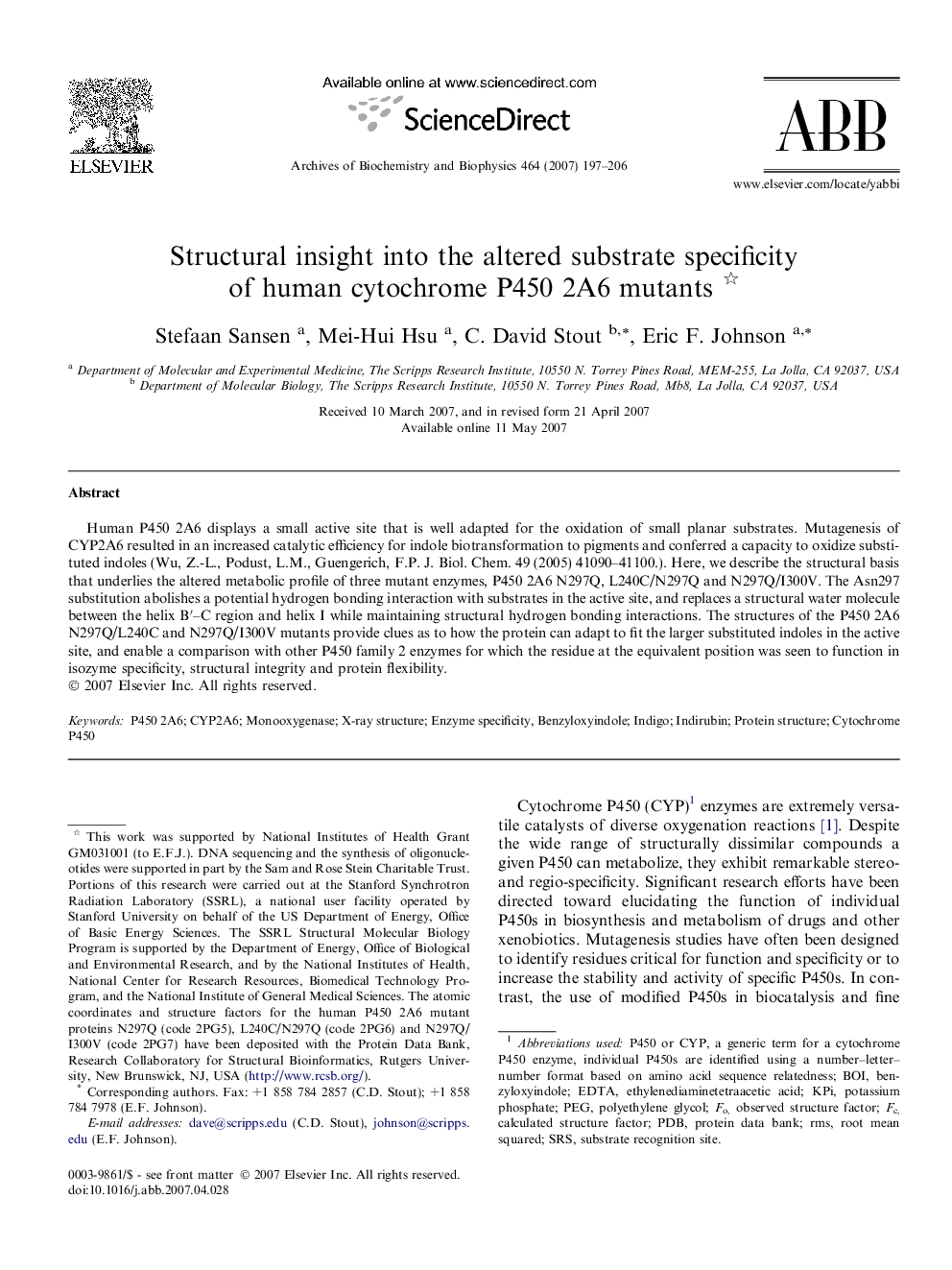| Article ID | Journal | Published Year | Pages | File Type |
|---|---|---|---|---|
| 8292120 | Archives of Biochemistry and Biophysics | 2007 | 10 Pages |
Abstract
Human P450 2A6 displays a small active site that is well adapted for the oxidation of small planar substrates. Mutagenesis of CYP2A6 resulted in an increased catalytic efficiency for indole biotransformation to pigments and conferred a capacity to oxidize substituted indoles (Wu, Z.-L., Podust, L.M., Guengerich, F.P. J. Biol. Chem. 49 (2005) 41090-41100.). Here, we describe the structural basis that underlies the altered metabolic profile of three mutant enzymes, P450 2A6 N297Q, L240C/N297Q and N297Q/I300V. The Asn297 substitution abolishes a potential hydrogen bonding interaction with substrates in the active site, and replaces a structural water molecule between the helix Bâ²-C region and helix I while maintaining structural hydrogen bonding interactions. The structures of the P450 2A6 N297Q/L240C and N297Q/I300V mutants provide clues as to how the protein can adapt to fit the larger substituted indoles in the active site, and enable a comparison with other P450 family 2 enzymes for which the residue at the equivalent position was seen to function in isozyme specificity, structural integrity and protein flexibility.
Keywords
Related Topics
Life Sciences
Biochemistry, Genetics and Molecular Biology
Biochemistry
Authors
Stefaan Sansen, Mei-Hui Hsu, C. David Stout, Eric F. Johnson,
